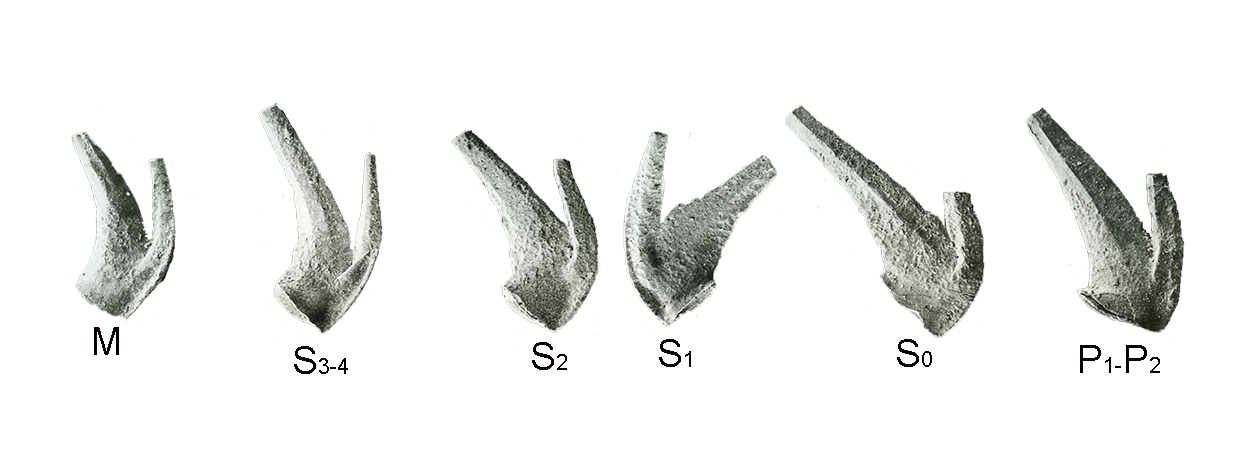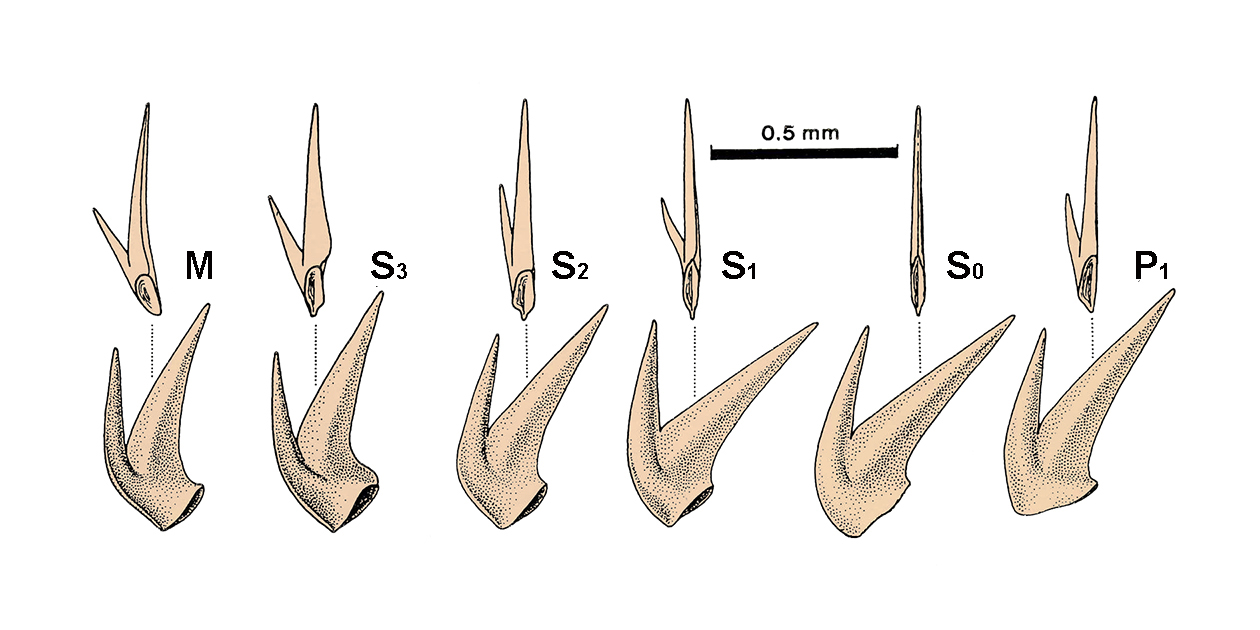Strachanognathus parvus Rhodes, 1955
Sugerowana cytacja: Moczyński 2017. Strachanognathus parvus Rhodes 1955. Ikonoteka (http://ikonoteka.paleo.pan.pl/xwiki/bin/view/Species/Strachanognathus+parvus)
Diagnoza All elements of the apparatus laterally flattened very large denticle on the inner side of the cusp. Porównanie Although all elements of the apparatus are of similar appearance, up to six discrete element types can be distinguished in large samples. They differ in the orientation of the denticles, which are more or less laterally bent, and in the width of their bases. There seems to be only a single symmetry transition series composed of them, with the symmetrical element being the second in width the base . It thus seems reasonable to interpret the element with the widest base to be a homologue of the P series while the twisted element at the opposite end of the morphocline is the M element. There are some ontogenetic changes in the morphology of the elements. Large specimens show a thickening at the postero-internal surface of the cusp; in effect the cusp and the denticle are separated basally by a furrow. Juvenile specimens are completely smooth and very flat. Autekologia Występowanie geograficzne Zasięg czasowy from the Volkhovian to Ashgill without showing any significant evolutionary changes. Materiały muzealne ZPAL Literatura Dzik, J. 1994. Conodonts of the Mójcza Limestone. In: J. Dzik, E. Olempska, & A. Pisera. Ordovician carbonate platform of the Holy Cross Mountains. Palaeontologia Polonica 53, 43-128. |
|


